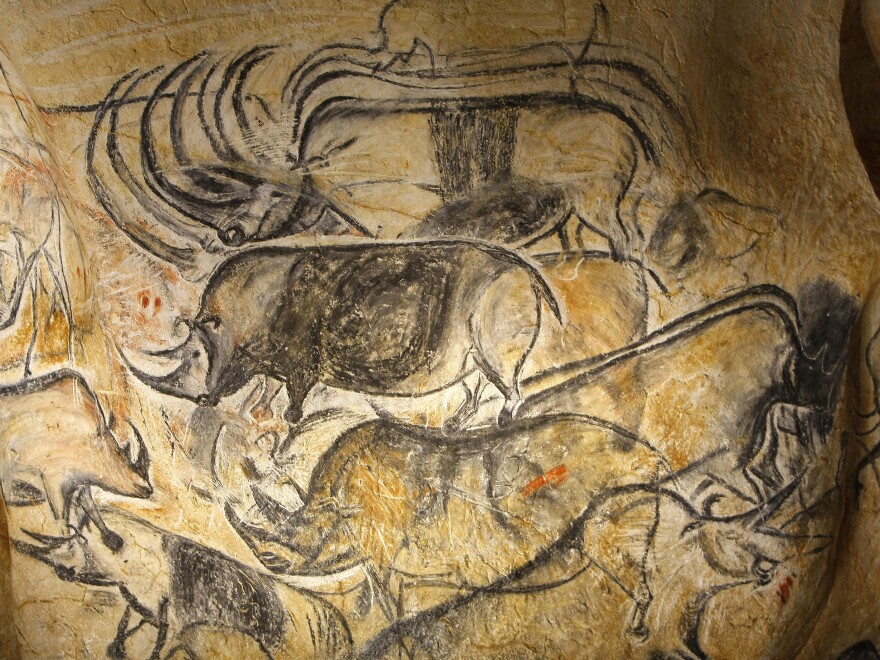We don't know why our ancestors made paintings deep inside caves in France and Spain as long ago as 30,000 years ago.
Was it to celebrate or tabulate or hallucinate or worship? We can only speculate. This much is pretty sure, though. The caves, inaccessible now, were — or so at least there is every reason to believe — pretty inaccessible then. You needed to climb and crawl and squeeze in. And once you were there, you were shrouded in darkness.
It's hard to discount the idea that whatever reasons moved these ancient artists to mark up these cavern walls, the effect of torchlight in these enclosed spaces was important, for these spaces were available to human perception only by torchlight.
I thought of these inaccessible galleries or sanctuaries when I read a remarkable article by Ralph Blumenthal in The New York Times a couple of months back about the recently discovered "earthworks" of northern Kazakhstan. The discovery was remarkable in itself. Dmitriy Dey, described as an archaeology "enthusiast," was watching a show about pyramids on the Discovery Channel when he got the idea of using Google Earth to look for pyramids in his native Kazakhstan. He didn't find pyramids, but he found something else: hundreds of earthen constructions consisting of lines, squares, swastikas, circles and other shapes — in many cases as much as hundreds of meters long. The constructions are easily visible from the air but hard to notice, or get a sense of, from the ground. To get a sense of the whole, to take them in, in their graphical completeness, you need to see them from above.
Geological tests make it clear that these structures are old, on the order of 8,000 years old. From this we can safely conclude, I think, that neither the builders nor the users of these installations ever did see them from above. So these shapes and patterns were, and have remained, all this time, unseen. They are radically inaccessible. Indeed, it is only now, using satellite imagery provided by NASA, taken from hundreds of miles above the face of the earth, that we can really bring these extraordinary forms into resolution.
It is good to be reminded that we human beings remain a mystery to ourselves.
And this certainly qualifies as one.
Could it have been that these designs were unintentional side effects, mere accidents of utility? Maybe the manufacturers would have been astounded to learn how their creations looked from above?
Or might it be that their form was fully understood and aimed at? Maybe these were works made for a virtual eye, or for the eyes of gods, or birds, or, even, for the imagined eyes of descendants who, it might have been fancied, would one day learn to fly.
Will we ever know what these are or why they came to be?
Alva Noë is a philosopher at the University of California, Berkeley, where he writes and teaches about perception, consciousness and art. He is the author of several books, including his latest, Strange Tools: Art and Human Nature (Farrar Straus and Giroux, 2015). You can keep up with more of what Alva is thinking on Facebook and on Twitter: @alvanoe
Copyright 2021 NPR. To see more, visit https://www.npr.org.



